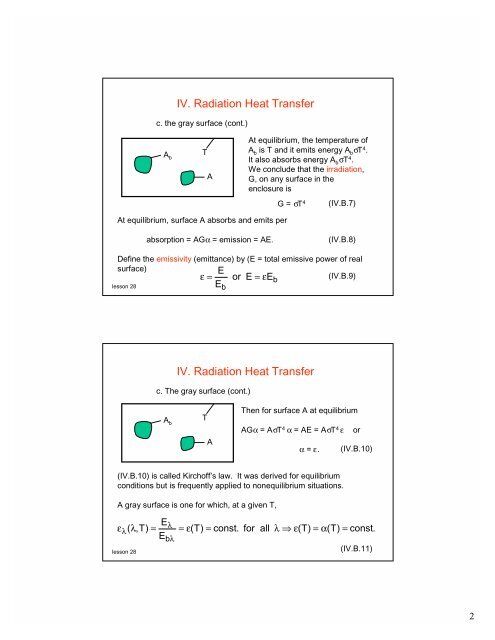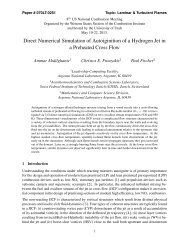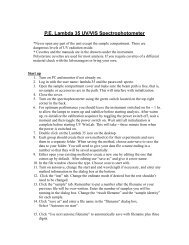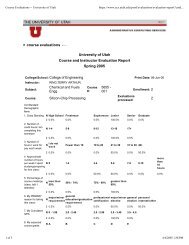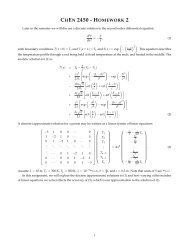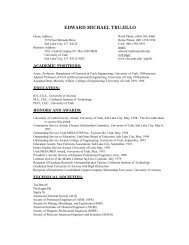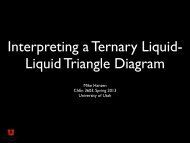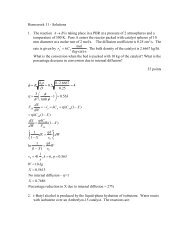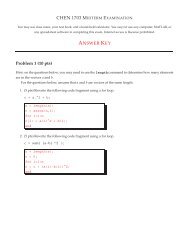IV. Radiation Heat Transfer IV. Radiation Heat Transfer
IV. Radiation Heat Transfer IV. Radiation Heat Transfer
IV. Radiation Heat Transfer IV. Radiation Heat Transfer
Create successful ePaper yourself
Turn your PDF publications into a flip-book with our unique Google optimized e-Paper software.
<strong>IV</strong>. <strong>Radiation</strong> <strong>Heat</strong> <strong>Transfer</strong>c. the gray surface (cont.)A bTAAt equilibrium, the temperature ofA b is T and it emits energy A b σT 4 .It also absorbs energy A b σT 4 .We conclude that the irradiation,G, on any surface in theenclosure isG = σT 4 (<strong>IV</strong>.B.7)At equilibrium, surface A absorbs and emits perabsorption = AGα = emission = AE.(<strong>IV</strong>.B.8)Define the emissivity (emittance) by (E = total emissive power of realsurface)Eε = or E = εEb(<strong>IV</strong>.B.9)Eblesson 28<strong>IV</strong>. <strong>Radiation</strong> <strong>Heat</strong> <strong>Transfer</strong>c. The gray surface (cont.)A bTAThen for surface A at equilibriumAGα = AσT 4 α = AE = AσT 4 ε orα = ε. (<strong>IV</strong>.B.10)(<strong>IV</strong>.B.10) is called Kirchoff’s law. It was derived for equilibriumconditions but is frequently applied to nonequilibrium situations.A gray surface is one for which, at a given T,Eε ( λ,T)= λλEbλlesson 28= ε(T)= const.forallλ ⇒ ε(T)= α(T)= const.(<strong>IV</strong>.B.11)2


